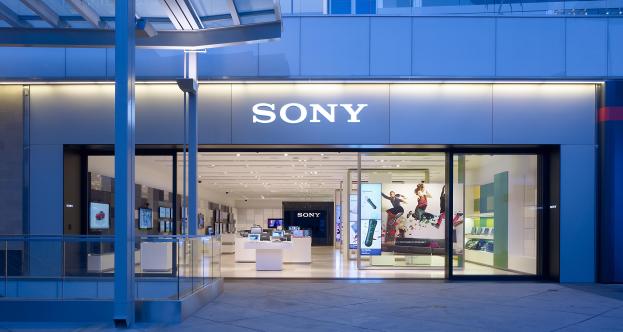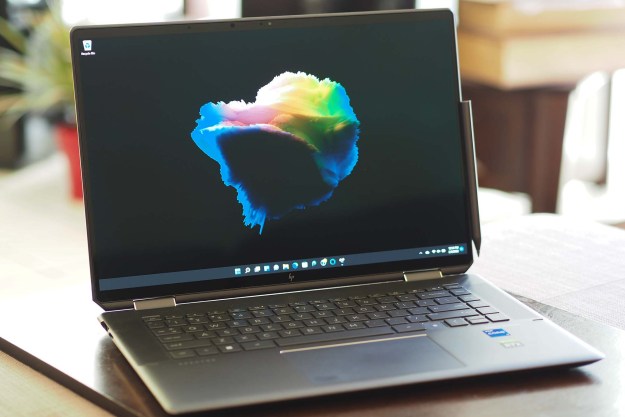
Sony has announced that former PlayStation chief Kazuo Hirai will be taking over as both president and CEO of Japanese electronics giant Sony, replacing former CBS executive Howard Stringer as of April 1. Although few industry watchers are surprised to see Hirai advance to the top position at Sony, he is doing so at a time when the once-unstoppable company is facing major challenges and dwindling prospects in almost all of its core markets, from video gaming and entertainment to home electronics and mobile devices. What kind of Sony is Hirai inheriting — and how can he hope to turn it around?
Money talks
The primary goal of a business like Sony is to make money — and that means the primary goal of its chief executive is to maximize the value the company returns to shareholders. (You’ll notice responsibility to things like consumers or the environment isn’t anywhere in that sentence — like all other secondary goals, those things only matter if they help the company make money.) And money is undoubtedly the primary reason Sony moved to replace Stringer. Stringer took over as Sony’s CEO in 2005. Under Stringer’s leadership, Sony went from a mammoth, profitable company to a firm that posted its first losses in 14 years: 2009 and 2010 saw the company lose a $1 billion and $440 million, respectively. That number jumped to $3.1 billion in 2010, and Sony has forecast it’ll lose another $2.2 billion in its 2011 fiscal year. That’ll be four years of losses in a row on Stringer’s watch.
It’s not just that Sony’s finances have been rocked by the global economic downturn and significant one-time events (which, to be sure, they have). The long-running Japanese recession, the U.S. financial crisis, and the percolating series of debt crises in Europe haven’t done Sony any favors — nor did the 2011 Tohoku earthquake and tsunami. But perhaps more seriously, Sony has seen its worldwide sales volume and net income decline precipitously because its core businesses have been eroded by competitors. The combined effect is not just that Sony is on the verge of its fourth consecutive year of losses, but that it’s seeing its total sales and net income decline, even as its competitors like Samsung and Apple are successfully growing their businesses in Sony’s core markets.

Portable media
Sony used to command the portable music player market, dating all the way back to the 1980s. The term “Walkman” nearly become generic for any portable music player — CDs or (shudder) cassettes, thanks to Sony’s success. Now, of course, the term “iPod” is almost generic for any portable music player, and while Sony long-since went digital and tried to compete in the market on the basis of style and quality, it only succeeded against the Apple iPod as well as everyone else: not in the slightest.
 Gaming
Gaming
But the Walkman and the iPod largely predate Stringer’s tenure at Sony. How about something near and dear to incoming CEO Kazuo Hirai’s heart: gaming. Sony has always been a strong player in the console and handheld gaming market, with its original PlayStation console helping define a generation. The company experienced explosive success with the PlayStation 2, which was launched in 1999. It is still on sale, and remains the best-selling game console of all time, having moved over 150 million units since launch.
However, Sony fumbled with the launch of the Blu-ray-enabled PlayStation 3 back in 2006. The product was beleaguered by a high price tag, a lack of must-have titles exclusive to the platform, and — perhaps most importantly — was utterly sideswiped a year later by the inexpensive Nintendo Wii.
Yes, PS3 sales have gradually picked up as Sony has iterated the product and lowered its price. Before the 2011 holiday season, about 56 million PS3s had sold worldwide, which was becoming comparable to Microsoft’s Xbox 360 (both of which are still far behind the Wii in total sales). However, the company was still selling the consoles at a loss well into 2010, which did nothing to help the bottom line of Sony’s gaming business.

Electronics
These issues aside, gaming and portable media devices are a small portion of Sony’s overall revenue: the bulk of Sony’s revenue derives from electronics, including televisions, audio gear, computers, cameras and video gear, as well as substantial sales of semiconductors and components.

After years of sustained losses, some investors have called for Sony to get out of the TV business altogether, which Sony and outgoing CEO Stringer have consistently resisted. In an effort to stop its losses in its television business, Stringer moved to split Sony’s HDTV business into three sub-units: LCD TVs, next-generation TVs, and outsourcing operations (making panels for other manufacturers). The effects of that reorganization have yet to be felt, but Sony did sell off its interest in its S-LCD joint venture to Samsung. Sony’s strategy for cost reduction seems to rely in part on avoiding investment in its own manufacturing facilities and instead on sourcing some panels from competitors like Sharp, Toshiba, and Samsung. This strategy may avoid the high costs of investing in manufacturing operations, but does limit the amount of innovation Sony can introduce to the most important component of a television: its screen. If Sony wants to occupy the high end of the television market, that doesn’t give it as much room to differentiate itself as some of its competitors.

And Sony manufacturing has had a few flubs of its own: Back in 2006, Sony had to recall over 4.1 million notebook computer batteries. It was the largest computer product recall in history up to that point, and impacted not just Sony products but batteries it made for companies like Dell, Apple, HP, Lenovo, and many other computer makers. The worldwide recall cost Sony as much as $500 million, or roughly half Sony’s net income for 2006.
Music and movies
Sony also derives significant revenue through Sony Pictures, which produces a wide variety of feature films and television. Despite some serious mis-steps (anybody remember How Do You Know?) the studio has managed to hold a relatively even keel, thanks in part to a strong slate of international offerings and television programming. However, Sony reshuffled its music business, buying out Bertelsmann AG’s share of Sony BMG in 2008 for $1.2 billion to be in full control of Sony Music Entertainment. Sony Music Entertainment is one of the “big four” record labels, and controls labels and catalogs like Epic and Columbia. Like all music labels, Sony Music Entertainment has seen its revenue drop with declines in CD sales (which haven’t been replaced by paid music downloads), but the company still pulled in over $5.6 billion last year, earning almost $470 million in profit.
 And what about mobile?
And what about mobile?
With Sony’s expertise in electronics, communications, cameras, and manufacturing, one might think Sony would be a major player in the mobile market. But it’s not. For years, Sony put its mobile bets on a joint partnership with Ericsson, and Stringer preferred to wait and see what the joint venture could do rather than move aggressively into mobile. Despite some valiant efforts, Sony-Ericsson never managed to make much of a dent in the mobile marketplace. Outgoing CEO Howard Stringer saw mobile as key to his “four screen” strategy: television, computers, tablets, and mobile. So Sony bought out Ericsson’s share of the joint venture late last year for $1.5 billion. By mid-2012, the world should start seeing Sony-branded phones on the market. Nonetheless, despite expertise in computers and some initial tablet offerings, Sony is very late to the mobile arena, and it’s not clear how the company plans to distinguish its offerings from heavy hitters like Apple, Samsung, and HTC.
Kaz’s path
As Sony’s CEO, Kazuo Hirai is going to face difficult decisions about how to turn many of Sony’s businesses.
Hirai previously expressed his belief that Sony should stay in the television business, but it’s not clear how Sony can successfully differentiate itself from competitors in the HDTV arena. Sony tends to see itself as a content ecosystem — a stance that’s borne out through its e-books business, Qriocity music service, and (of course) the PlayStation Network. However, it’s Bravia Internet-connected televisions have yet to strongly resonate strongly with consumers, and Sony’s experiment with embedding Google TV in a flat-screen TV has quietly been sent out to pasture (although the company has announced network and Blu-ray players with Google TV).
Sony’s television strategy so far seems to have been working at cross purposes: On one hand, the company wants to occupy a high-end, high-margin portion of the market by offering top-of-the-line products. As Apple has proven with computers, music players, phones, and now tablets, market share doesn’t matter as much at the high end of a market because margins are so much higher. However, Sony also wants to generate as much revenue as possible from its content ecosystems (music, movies, television, and games) rather than passing that revenue off to the likes of Amazon and Netflix. Content ecosystems generate revenue based on volume, which means selling lots of units. Sony wants to be a prestige brand, but also a mass-market brand.
It’s not clear how Sony can do both, especially if it’s willing to sacrifice manufacture of television displays and potentially cede control of the television screen to Google TV, rather than its own XMB-based Bravia Internet TV platform. Handing over both leaves Sony doing little more than designing bezels. And, in the event Apple decides to enter the television market, Sony might find aiming at the high-end of the consumer market is untenable.
On the gaming front, Sony still controls one of the world’s most recognized gaming brands: PlayStation. Moreover, Sony controls not just the PlayStation brand, but the hardware and software ecosystem: It’s a vertical market not unlike the one Apple enjoys with its Macintosh computers and iOS devices. However, Sony has had limited success transitioning the PlayStation brand from consoles to portable or mobile devices. Like it or not (and serious gamers generally do not) tablets and mobile phones are going to be the focus of most game development in the near and medium term, because developers will try to follow the money. (Sony has sold roughly 60 million PS3s since 2006; Apple sold 40 million iPads last year alone. And the iPad costs more.) Although high-end console games with specialized hardware and controllers aren’t going to be going away, if there’s one thing the success of the Nintendo Wii, Xbox Kinect, and mobile gaming has proven, it’s that entertainment and gaming products that appeal to a broad audience will sell better than dedicated gaming products.
Now that Sony no longer has to work through the Sony-Ericsson joint venture to access the smartphone market, Sony might have a real opportunity to innovate in the smartphone and tablet arena — particularly in conjunction with the PlayStation brand. But that kind of effort could take years to bear fruit—and Sony’s investors are going to be demanding results sooner than later.




